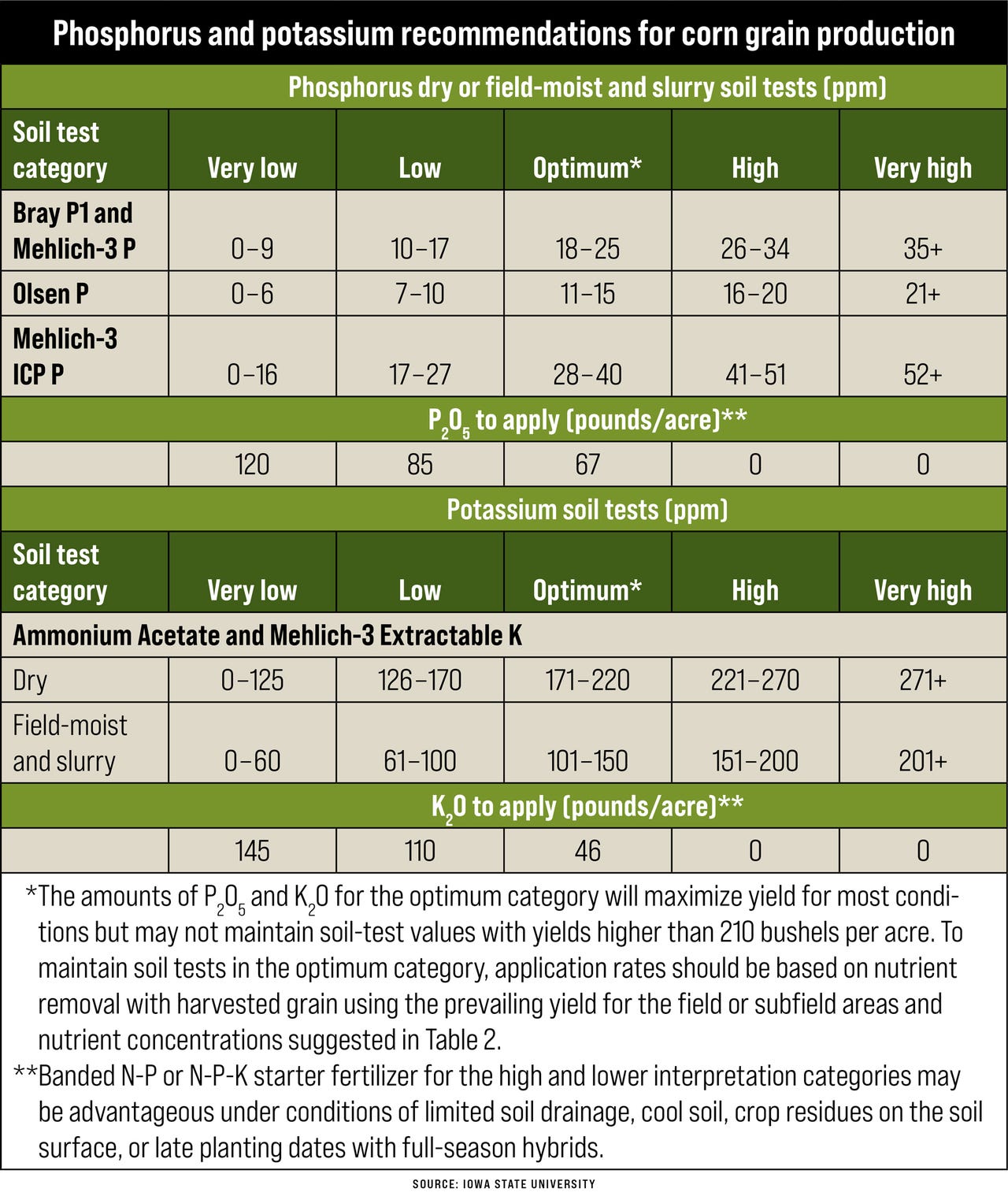Once you receive your soil test report, how do you interpret it and any fertilizer application suggestions that may be included? Further, if the crop and fertilizer markets have left you with insufficient resources to do everything that should be done, how should you set your priorities?
The Iowa “bible” on soil fertility is the Iowa State University Extension and Outreach publication PM 1688, “A General Guide for Crop Nutrient and Limestone Recommendations in Iowa.” It can be purchased online or at any county Extension office for $2.50 or downloaded at no charge from store.extension.iastate.edu/product/5232. Following the guidance in PM 1688 will lead to the best long-term profitability.
Here’s how
In PM 1688, on pages 5 and 6, you will note that soil test values for phosphorus and potassium are categorized as:
- very low
- low
- optimum
- high
- very high
Note that not all soil test laboratories follow the categorization parameters listed in PM 1688. So, the first thing you will want to do is make any needed adjustments to the categories listed on the soil test report.
Second, verify that any fertilizer recommendations listed on the soil test report are consistent with PM 1688. Some laboratories are “spot on,” while other are “out there a ways.” Make any needed adjustments to the fertilizer recommendations listed on the soil test report.
In PM 1688, you will note that no fertilizer is recommended when soil tests are high or very high, and crop removal is recommended if the soil test is optimum. Without getting into specifics, the recommendations for low-testing soils are essentially crop removal plus some additional fertilizer. The recommendations for very low-testing soils are crop removal plus a little more fertilizer than for low-testing soils.
At the end of PM 1688 (pages 10-12), you will note that a soil pH of 6.0 is considered sufficient for corn and soybean production in the area essentially west of Interstate 35 and north of I-80, plus the area essentially west of Highway 48 and south of I-80. For the rest of Iowa, a pH of 6.5 is considered sufficient for corn and soybean production. Again, following the guidance in PM 1688 will lead to the best long-term profitability.
Prioritize recommendations
If the commodity markets have left you without the resources to do everything that following PM 1688 recommends, what should you do? Here are two steps:
1. Address pH if it is below 5.8. Liming soils with a pH of 5.8 or higher is unlikely to provide a positive return on investment in the year or two following application. If the pH is less than 5.8, applying 1 ton of effective calcium carbonate equivalent per acre will provide all possible ROI for nearby corn, and a rate of 2 tons of ECCE per acre will provide all possible ROI for nearby soybean. Then, regularly test soil and follow the results in the future.
2. Apply fertilizer. Once any liming needs have been addressed, apply phosphorus and potassium fertilizers to soil in the following order until available fertilizer money has been expended.

Here’s what to do with phosphorus and potassium in very low-testing soil. If available funds do not allow the application of recommended fertilizer, apply what the funds will allow, applying some fertilizer to all very low-testing areas.
Here’s how to manage phosphorus and potassium in low-testing soil. Again, apply what your funds will allow, applying some fertilizer to all low-testing areas.
The likelihood of having a positive yield response when applying fertilizer to optimum-testing soil is only about 25%, and yield responses are generally small. So, having a positive ROI in years immediately following the application of fertilizer to optimum-testing soil is well below 25%.
In times with limited available financial resources, following these steps in the order listed will provide the maximum ROI on the resources that are available.
For further information, contact your county ISU Extension and Outreach office.